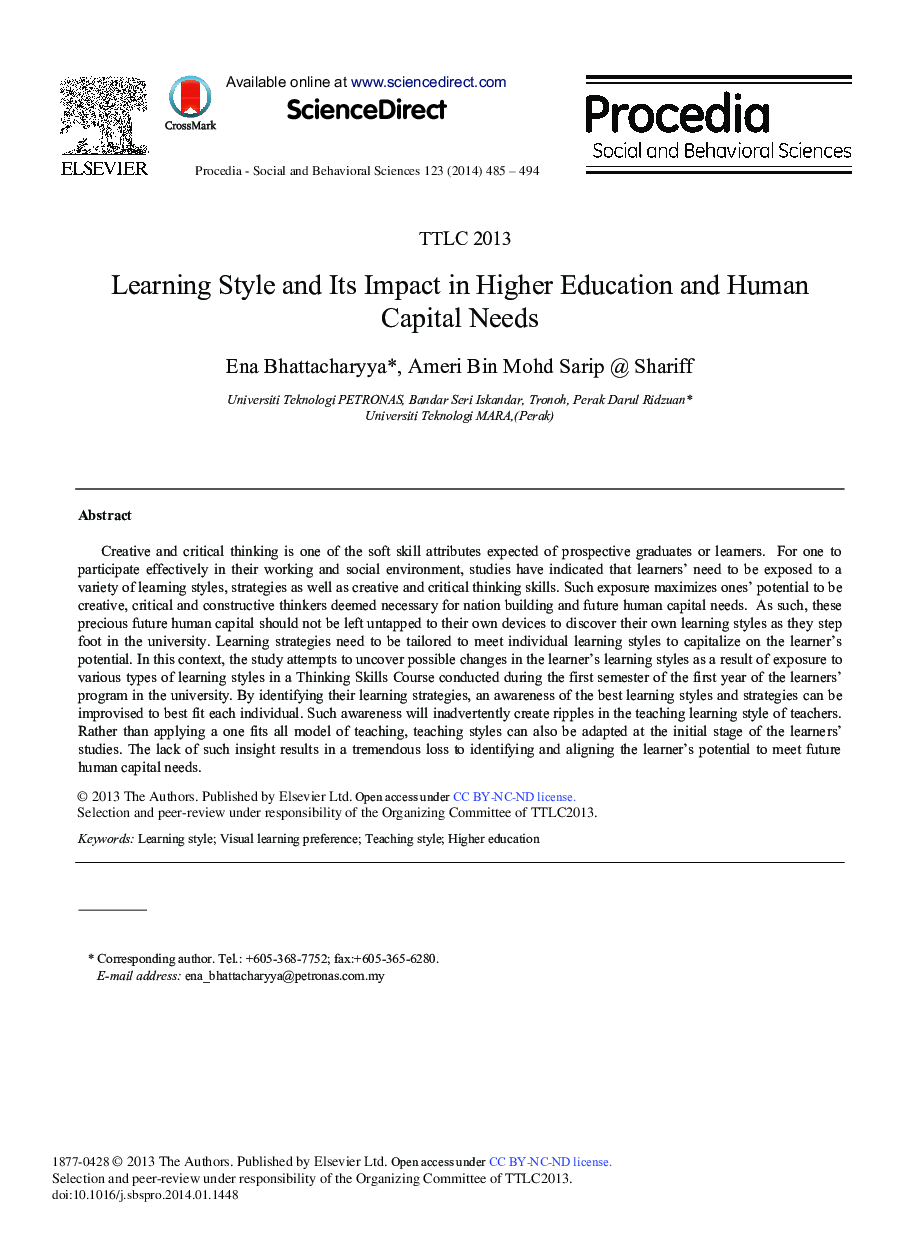| کد مقاله | کد نشریه | سال انتشار | مقاله انگلیسی | نسخه تمام متن |
|---|---|---|---|---|
| 1114433 | 1488436 | 2014 | 10 صفحه PDF | دانلود رایگان |
Creative and critical thinking is one of the soft skill attributes expected of prospective graduates or learners. For one to participate effectively in their working and social environment, studies have indicated that learners’ need to be exposed to a variety of learning styles, strategies as well as creative and critical thinking skills. Such exposure maximizes ones’ potential to be creative, critical and constructive thinkers deemed necessary for nation building and future human capital needs. As such, these precious future human capital should not be left untapped to their own devices to discover their own learning styles as they step foot in the university. Learning strategies need to be tailored to meet individual learning styles to capitalize on the learner's potential. In this context, the study attempts to uncover possible changes in the learner's learning styles as a result of exposure to various types of learning styles in a Thinking Skills Course conducted during the first semester of the first year of the learners’ program in the university. By identifying their learning strategies, an awareness of the best learning styles and strategies can be improvised to best fit each individual. Such awareness will inadvertently create ripples in the teaching learning style of teachers. Rather than applying a one fits all model of teaching, teaching styles can also be adapted at the initial stage of the learners’ studies. The lack of such insight results in a tremendous loss to identifying and aligning the learner's potential to meet future human capital needs.
Journal: Procedia - Social and Behavioral Sciences - Volume 123, 20 March 2014, Pages 485-494
